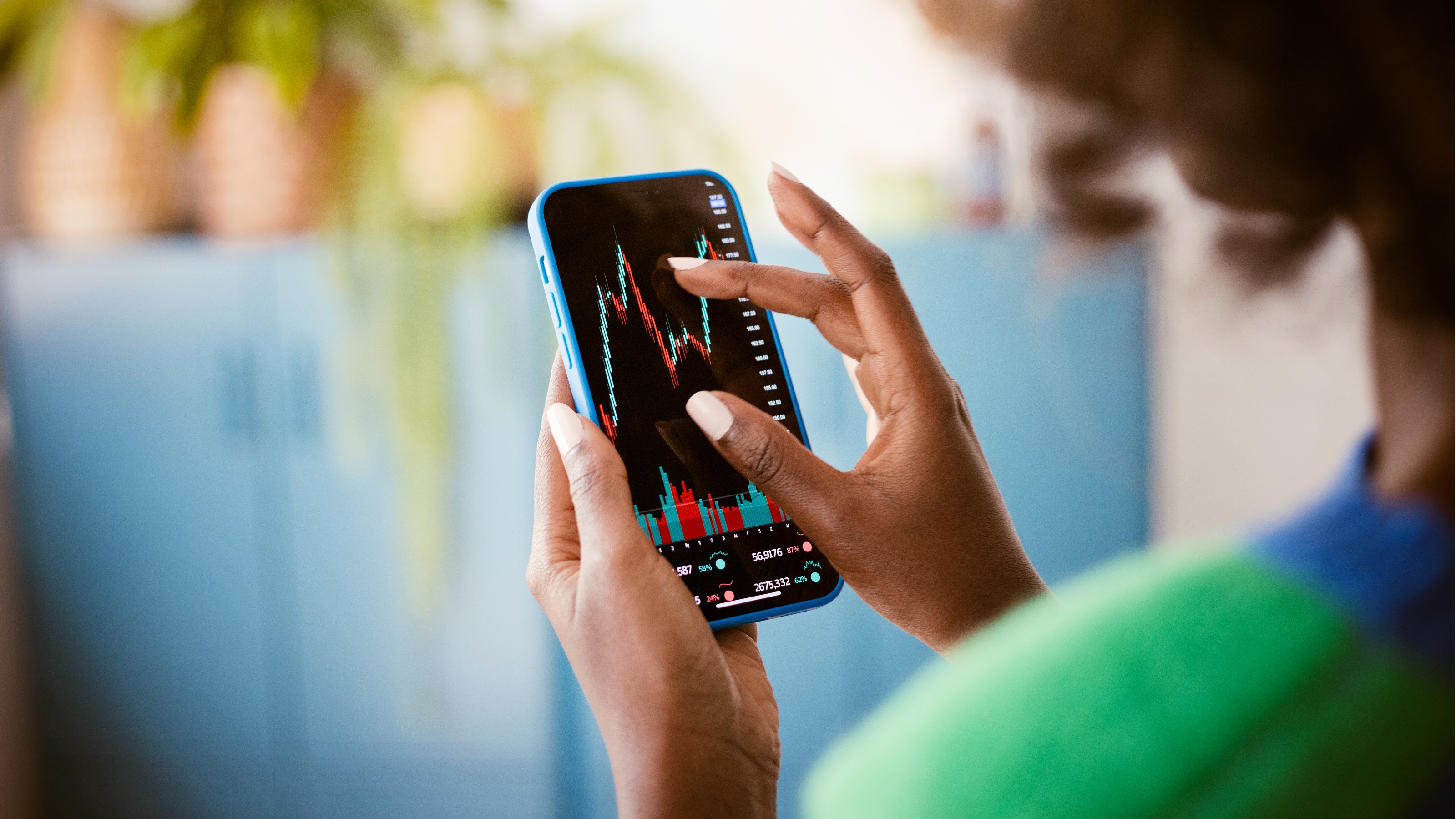If January Predicts the Rest of the Year, Investors Could Be Hurting
It’s known as the January Barometer, but how accurate is it? Let’s dissect this interesting stock market statistical phenomenon by checking the numbers for the last 72 years.


The month of January 2022 is over, and it wasn’t a pretty one for investors. The Standard & Poor’s 500 closed at 4516, down 251 points, or 5.3%, for the month. Now, for some more potential bad news: If you believe a popular stock barometer, the market pain might just be getting started.
That’s because two patterns in January have historically predicted the direction of the stock market for the rest of the year with a high degree of accuracy, according to the Stock Trader’s Almanac.
The January Barometer
What is known as the January barometer indicates that as the S&P 500 goes in January, so goes the year.

Sign up for Kiplinger’s Free E-Newsletters
Profit and prosper with the best of expert advice on investing, taxes, retirement, personal finance and more - straight to your e-mail.
Profit and prosper with the best of expert advice - straight to your e-mail.
If the S&P 500 has positive returns in January, the overwhelming amount of time the market will end up with positive returns of 5% or more for the year. And if the S&P 500 has a negative return in January, the overwhelming amount of time the market will end up with negative returns of 5% or more for the year.
Going back to 1950 through the end of 2021 the January barometer has registered major errors in only 12 years out of the 72 years in this period. This gives it an 83.33% accuracy rate.
For those 12 years there were three where January was positive and the S&P 500 ended the year negative, and there were nine years where January was negative and the S&P 500 ended positive.
In 52 of the other 60 years if January was up the S&P 500 ended the year decisively positive, and if January was down the S&P ended the year decisively in negative territory.
In the remaining eight years the S&P 500 ended the year flat. Which means it was less than 5% above or below where it started the year. Put another way, the January barometer didn’t predict a meaningful loss or gain for those eight years.
If we eliminate these eight flat years, we would then have the January barometer correctly predicting the direction of the stock market in 52 out of the last 72 years which would be a 72.2% accuracy rate.
Negative Januaries Spell Trouble
Negative Januaries have been harbingers of trouble ahead. There have been 29 of them since 1950.
While nine resulted in decisively positive returns for the year (meaning returns of better than 5%), in 100% of the down Januaries they were followed by a new or continuing bear market, a 10% correction or a flat year.
Down Januaries were also followed by substantial declines sometime later in the same year averaging -13%. This is not good news for advocates of the January effect.
January’s First Five Days
The other pattern to watch is January’s first five days. In 47 out of the last 72 years, during the first five trading days of January the S&P 500 was up. This was then followed by full-year gains in 39 of the 47 years.
This means over this time period, 82.98% of the time when the market was up during the first five days of the year, it ended the year with a positive return.
Unfortunately, that wasn’t the case in January 2022. The S&P finished the first five trading days of the year down – although not dramatically – by almost 90 points, or 1.9%.
Judging by history, it’s tougher to tell what that might mean for the rest of the year, because in the other 25 years where the first five days in January were negative, the results were much less predictable. In 14 of these 25 years the S&P 500 ended with a gain, and in 11 of the 25 years it ended the year with a loss.
This means only 44% of the time was the market negative for the year (11 out of 25 years) when the first five days were negative, giving it only a 44% accuracy rate.
The average gain across all 25 years was roughly 1% a year as compared to the 13.7% average gain per year across the 47 periods where the first five days in January were up.
The Bottom Line
To summarize, since 1950 the direction of the S&P 500 in January, known as the January barometer, has accurately predicted the direction of the stock market for the year 72.2% of the time.
And when the return on the S&P 500 during the first five days of January has been positive, the stock market has had a positive return for the year roughly 83% of the time.
There are certainly pundits who consider these trends to simply be dumb luck, almost like voodoo economics. Others take these two trends very seriously.
While I wouldn’t bet my entire 401(k) plan on it, if you think these two January statistical trends are more than just dumb luck, you might consider using this information, along with other relevant data, in making modest tweaks to your level of stock exposure.
And if nothing else, keep your fingers crossed that the market in 2022 defies these two trends and ends the year higher.
Get Kiplinger Today newsletter — free
Profit and prosper with the best of Kiplinger's advice on investing, taxes, retirement, personal finance and much more. Delivered daily. Enter your email in the box and click Sign Me Up.

-
 How to Get Apple TV Plus for just $2.99
How to Get Apple TV Plus for just $2.99For a limited time, you can get three months of Apple TV Plus for just $2.99 per month. Here’s how to get the deal.
By Rachael Green Published
-
 Stock Market Today: Stocks Surge to Close a Volatile Week
Stock Market Today: Stocks Surge to Close a Volatile WeekIt was another day with a week's worth of both news and price action, but it ended on a strongly positive note.
By David Dittman Published
-
 Stock Market Today: Stocks Surge to Close a Volatile Week
Stock Market Today: Stocks Surge to Close a Volatile WeekIt was another day with a week's worth of both news and price action, but it ended on a strongly positive note.
By David Dittman Published
-
 Home Insurance: How to Cut Costs Without Losing Coverage
Home Insurance: How to Cut Costs Without Losing CoverageNatural disasters are causing home insurance premiums to soar, but don't risk dropping your coverage completely when there are ways to keep costs down.
By Jared Elson, Investment Adviser Published
-
 Markets Roller Coaster: Resist the Urge to Make Big Changes
Markets Roller Coaster: Resist the Urge to Make Big ChangesYou could do more harm than good if you react emotionally to volatility. Instead, consider tax-loss harvesting, Roth conversions and how to plan for next time.
By Frank J. Legan Published
-
 Why Homeowners Insurance Has Gotten So Very Expensive
Why Homeowners Insurance Has Gotten So Very ExpensiveThe home insurance industry is seeing more frequent and bigger claims because of weather, wildfires and other natural disasters.
By Karl Susman, CPCU, LUTCF, CIC, CSFP, CFS, CPIA, AAI-M, PLCS Published
-
 Stock Market Today: Uncertainty Proliferates: Dow Loses 1,014 Points
Stock Market Today: Uncertainty Proliferates: Dow Loses 1,014 PointsWeaker-than-expected consumer inflation data wasn't enough to stabilize sentiment during another volatile day for financial markets.
By David Dittman Published
-
 Going Through Probate? How to Find the Right Attorney
Going Through Probate? How to Find the Right AttorneyJust having the skills and experience to do the job isn't enough. The probate attorney you hire needs to have the right temperament for your particular case.
By John R. Silva, Esq. Published
-
 Widow's Penalty: Three Ways to Protect Your Finances
Widow's Penalty: Three Ways to Protect Your FinancesHigher Medicare premiums, smaller Social Security payments, bigger tax bills … Financial changes can hit hard when a spouse dies. How to counter the blow.
By Ashley Terrell, IAR Published
-
 Four Ways Your Phone Can Help You Weather Market Volatility
Four Ways Your Phone Can Help You Weather Market VolatilitySmartphone apps can help investors make healthy decisions and maintain a disciplined investment approach — even when emotions try to steer them off course.
By Marco De Freitas Published